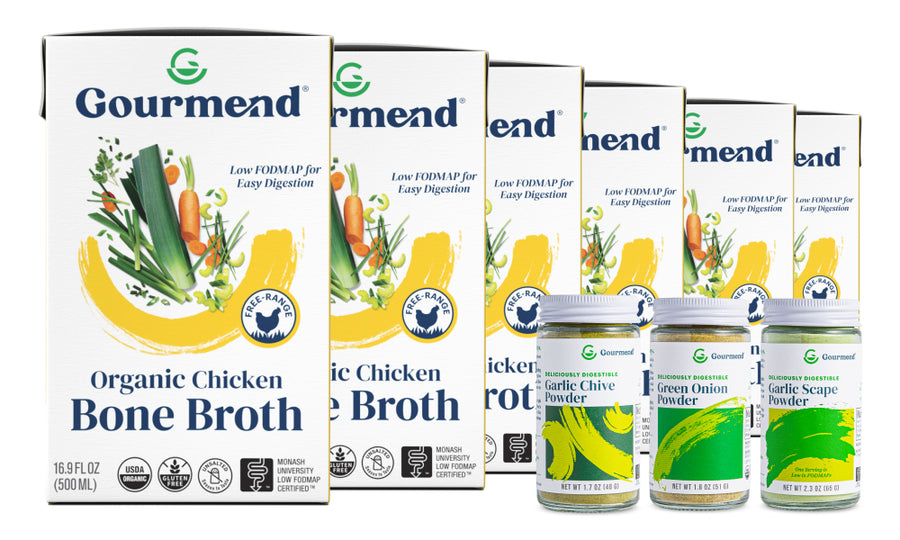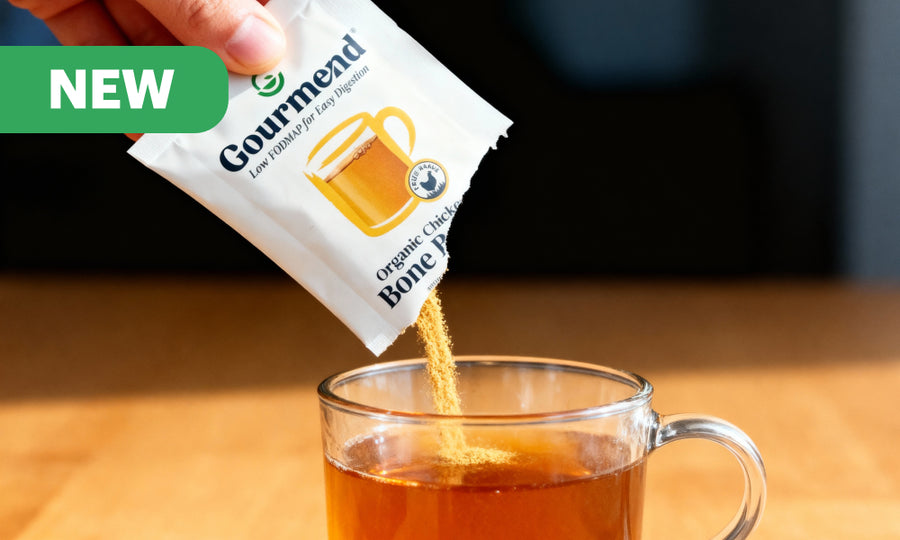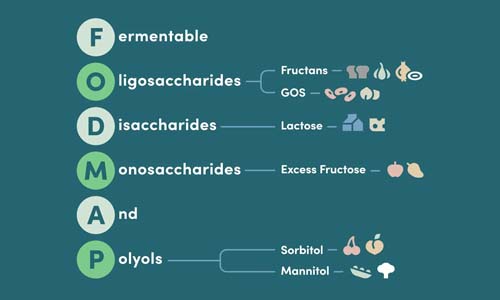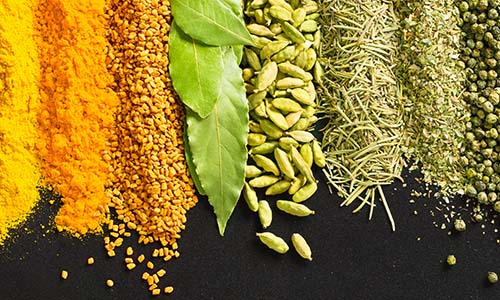Is Organic Vegetable Broth Good for Low FODMAP? Guide
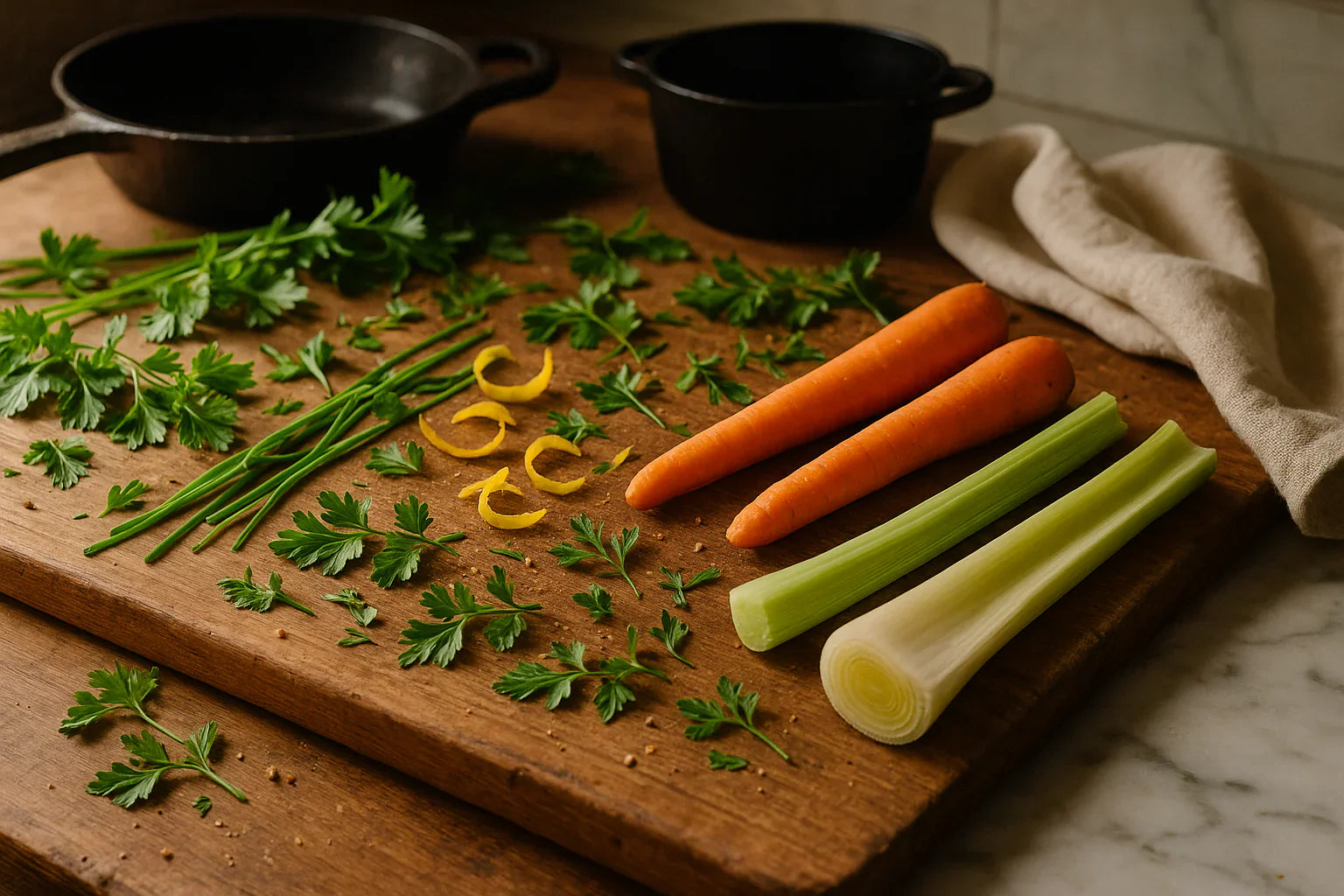
Key Takeaways
- Organic vegetable broth can be suitable for a low FODMAP diet if it does not contain high FODMAP ingredients like onion and garlic.
- Finding the right organic vegetable broth requires careful ingredient checking to avoid IBS triggers.
- It is possible to enjoy flavorful organic vegetable broth without causing digestive discomfort on a low FODMAP diet.
- Choosing and preparing the right broth can help maintain both clean eating and digestive peace.
Table of Contents
- Low FODMAP 101 for Broth Lovers: What, Why, and How It Impacts Your Pot
- Organic vs. Low FODMAP: How the Labels Differ, and What to Prioritize
- Exactly How to Read a Broth Label for Low FODMAP Compliance in 45 Seconds
- Flavor Without Onion or Garlic: Our Proven Aromatic Playbook
- Make It at Home: Organic Low FODMAP Vegetable Broth, Step-by-Step
- When to Reach for Store-Bought: How to Choose the Best Organic Low FODMAP Broth
- Comparison Guide: Organic vs Conventional, Carton vs Powder, Vegetable vs Bone Broth
- Nutritional Fine Points: Sodium, Yeast Extract, Miso, Kelp, and Mushrooms
- Real-World Cooking: 6 Ways to Use Organic Low FODMAP Vegetable Broth Today
- Troubleshooting & Fixes: Bland, Salty, Cloudy, or Tummy-Triggering
- For Special Diets: Gluten-Free, Vegan, Keto, Paleo, Low Histamine, Kosher/Halal
- Adapting Any Soup Recipe to Low FODMAP with Organic Vegetable Broth
Is Organic Vegetable Broth Good for Low FODMAP? How to Choose, Cook, and Savor Big Flavor Without the Bloat
When you're navigating the low FODMAP diet, the phrase "organic vegetable broth" can feel like a contradiction. You want clean ingredients and digestive peace, but most vegetable broths hide onion and garlic, the very ingredients that trigger IBS symptoms. The good news? Organic vegetable broth good for low FODMAP cooking absolutely exists when you know what to look for.
At Gourmend Foods, we've spent years perfecting broths that deliver gourmet depth without the digestive drama. Here's your complete guide to choosing, making, and cooking with organic vegetable broth that keeps your gut quiet and your taste buds singing. For more on animal-based options, see our guide to organic chicken broth for low FODMAP diets.
If you’re looking for a beef-based alternative, you may also want to explore organic beef broth suitable for low FODMAP cooking.
Low FODMAP 101 for Broth Lovers: What, Why, and How It Impacts Your Pot
FODMAPs are fermentable carbohydrates that some people struggle to digest. In broth-making, this matters because fructans from onion and garlic are water-soluble, they leach directly into your cooking liquid during simmering. Straining out the onion pieces after cooking won't remove these FODMAPs; they're already dissolved.
Here's the technique that works: sauté aromatics in garlic-infused olive oil, then remove the solids before adding water. The fructans aren't oil-soluble, so the flavor transfers without the digestive triggers.
During elimination phase, start with 1 cup (240 ml) broth per serving for 3-4 weeks. In reintroduction, increase by 1/2 cup every 2-3 days while tracking symptoms. Brighten flavor without FODMAP load by adding 1/2 teaspoon lemon juice or vinegar per cup at the end.
Organic vs. Low FODMAP: How the Labels Differ, and What to Prioritize

When forced to choose between organic certification and low FODMAP compliance, digestive comfort wins first. You can't enjoy the cleanest ingredients if they leave you bloated and uncomfortable.
Organic guarantees no synthetic pesticides and non-GMO ingredients by U.S. regulation. Low FODMAP ensures clear omission of onion, garlic, and transparent disclosure of "natural flavors." The ideal scenario combines both, which is exactly what we deliver at Gourmend.
Create a two-step filter when shopping: first scan for onion, garlic, or inulin; then confirm organic certification if that's your priority. Remember that "organic natural flavor" doesn't guarantee low FODMAP status, organic onion powder is still a trigger ingredient.
Exactly How to Read a Broth Label for Low FODMAP Compliance in 45 Seconds
Master this four-line scan order: ingredient list (top 10 items), "contains" statements, allergen disclosures, and certification badges on the side panel.
Your 45-second checklist:
- Scan ingredients for onion, garlic, shallot, or their powders
- Check for "vegetable stock (onion)" parentheticals
- Flag undisclosed "natural flavors" or "roasted vegetables"
- Verify no chicory root, inulin, or FOS
Email script for unclear labels: "Do your natural flavors contain any onion, garlic, or chicory-derived ingredients?"
For sodium control, target 140-360 mg per cup if you're watching salt intake. Choose unsalted varieties and add 1/8 to 1/4 teaspoon kosher salt per cup when serving, tasting as you go.
Flavor Without Onion or Garlic: Our Proven Aromatic Playbook
Building depth without onion or garlic isn't about compromise, it's about technique. We layer umami, acid, and fresh finishes so your broth never tastes like a "diet" version.
Our three-step flavor foundation:
- Sweat sliced leek greens and chive sprigs in 1 tablespoon garlic-infused olive oil for 3-4 minutes
- Add 1 teaspoon tomato paste per cup of broth; cook 60-90 seconds to caramelize
- Finish with 1 teaspoon lemon juice or 1/2 teaspoon sherry vinegar per cup, off heat
For deeper body, simmer a 2-inch strip of nori for 10 minutes, then remove before serving. If using nutritional yeast, start with 1/2 teaspoon per cup and adjust to taste. Keep herbs bright by adding tender varieties like parsley or dill in the last 2 minutes or off heat.
Make It at Home: Organic Low FODMAP Vegetable Broth, Step-by-Step

This precise blueprint yields clean, full-bodied flavor without triggering digestive discomfort. Start with organic vegetables that pass the low FODMAP test, then layer umami through strategic technique.
Base Recipe (Makes 8 cups):
- 3 cups chopped carrots
- 2 cups celery stalks and tender tops
- 2 cups leek green tops, sliced
- 1 cup fresh parsley stems
- 2 chive sprigs
- 1 small nori sheet
- 1 teaspoon whole peppercorns
- 2 bay leaves
- 1 tablespoon garlic-infused olive oil
Method: Heat oil in a large pot over medium heat. Sauté leek greens and chives for 3-4 minutes until fragrant. Add remaining vegetables, cover with 10 cups water, and bring to a gentle simmer. Cook covered for 45-60 minutes, avoid boiling to prevent cloudiness. Strain through fine mesh, pressing solids gently. Cool rapidly in an ice bath to 70°F within 30 minutes, then refrigerate immediately.
Storage: Refrigerate up to 4 days or freeze in 1-cup portions for up to 3 months. For low histamine needs, simmer only 30-40 minutes and freeze the same day.
When to Reach for Store-Bought: How to Choose the Best Organic Low FODMAP Broth
Smart shopping starts with a clear hierarchy: low FODMAP integrity first, then organic certification and sodium control. The best organic vegetable broth good for low FODMAP combines transparent labeling with clean farming practices, giving you confidence in every cup.
Must-Have Criteria:
- Zero onion, garlic, or their powders in any form
- Transparent "natural flavors" disclosure or none listed
- No chicory root, inulin, or fructo-oligosaccharides
- Organic certification from USDA or equivalent
- Sodium level ≤300mg per cup for better control
Gourmend's shelf-stable broth carton represents the gold-standard boxed option. We build onion-like depth using chives, scallion greens, and leek greens, while nori and oyster mushrooms deliver rich umami without digestive triggers. Our unsalted format lets you season to taste, ensuring every bowl hits your flavor preferences perfectly.
Format Considerations: Liquid cartons offer ingredient transparency and immediate use. Powders require scrutiny for anti-caking agents and hidden fibers, always verify the absence of onion powder and inulin before purchasing. Concentrates work well but check sodium levels, as they often pack 400-600mg per reconstituted cup.
Comparison Guide: Organic vs Conventional, Carton vs Powder, Vegetable vs Bone Broth
Understanding these key distinctions helps you choose the right organic vegetable broth good for low FODMAP cooking, whether you prioritize farming practices, convenience, or specific dietary needs.
| Comparison | Option A | Option B | Best For |
|---|---|---|---|
| Farming Method | Organic: No synthetic pesticides, non-GMO | Conventional: Lower cost, wider availability | Organic wins for clean-label priorities |
| Format | Liquid Carton: Ready-pour, clear ingredients | Powder: Compact storage, portion control | Cartons for transparency, powders for camping |
| Base Type | Vegetable: Vegan, lighter body | Bone Broth: Richer mouthfeel, protein | Vegetable for plant-based, bone for richness |
The FODMAP Factor: Both organic and conventional broths can be low FODMAP, the key lies in ingredient selection, not farming method. However, organic brands often provide more detailed ingredient transparency, making FODMAP verification easier. For a comprehensive list of suitable produce, check out our resource on low FODMAP vegetables.
Practical Applications: Use vegetable broth for risottos, quinoa dishes, and light soups where you want ingredients to shine. Choose bone broth (like Gourmend's chicken or beef options) for heartier braises, stews, or when you want sippable richness. For powders, start at 3/4 strength and build up, adding fresh herbs and acid to compensate for any flatness.
Nutritional Fine Points: Sodium, Yeast Extract, Miso, Kelp, and Mushrooms

These flavor enhancers can elevate your organic vegetable broth good for low FODMAP cooking, but portion awareness and personal tolerance matter. Each adds distinct umami depth when used thoughtfully.
Sodium Strategy: Target ≤300-400mg per cup if monitoring salt intake. Unsalted broths give you complete control, add 1/8 to 1/4 teaspoon kosher salt per cup at serving, tasting as you go. This approach prevents over-salting while maintaining the bright, clean flavors that make low FODMAP cooking shine.
Umami Boosters: Nutritional yeast and yeast extract are generally well-tolerated in low FODMAP portions. Start with 1/2 teaspoon per cup and assess your comfort within 24 hours. Miso adds complexity when stirred in off-heat, begin with 1/2 teaspoon per cup to avoid overwhelming the delicate vegetable base.
Sea Vegetables and Mushrooms: A 2-inch nori strip simmered for 10 minutes delivers oceanic depth without overpowering. Remove before serving to prevent excessive sea flavor. Oyster mushrooms can work in small amounts, try 1-2 thin slices per quart, then strain. Avoid dried shiitake, as they typically test high FODMAP and can trigger symptoms even in modest portions.
Tolerance Tracking: Keep a simple flavor diary noting amounts per cup and your comfort rating (0-10). This personal data helps you fine-tune your broth for both flavor and digestive ease.
Real-World Cooking: 6 Ways to Use Organic Low FODMAP Vegetable Broth Today
Transform your weeknight cooking with these precise, gourmet applications that deliver maximum flavor in minimal time. Each technique builds layers of taste while keeping your digestive system comfortable. For a delicious meal idea, try our low FODMAP vegetable quinoa salad that features broth as a key ingredient.
10-Minute Miso-Ginger Sip: Heat 1 cup broth with 1 teaspoon grated fresh ginger for 3 minutes. Whisk in 1/2 teaspoon white miso off heat, then finish with 1/2 teaspoon sesame oil. Perfect for cold evenings or digestive reset days.
Herbed Quinoa Pilaf: Rinse 1 cup quinoa until water runs clear. Cook in 1 3/4 cups broth for 15 minutes, rest 5 minutes, then fluff with chopped parsley and lemon zest. The broth transforms plain quinoa into a restaurant-worthy side.
Weeknight Risotto: Toast 1 cup arborio rice in 1 tablespoon garlic-infused olive oil for 2 minutes. Add 3-3.5 cups warm broth gradually over 18 minutes, stirring frequently. Finish with fresh chives and parmesan if tolerated.
Brothy White Beans: Combine 1 cup rinsed canned cannellini beans with 1.5 cups broth, 1 bay leaf, and chopped chives. Simmer 10 minutes until creamy. Serve over rice for complete protein comfort.
Poached Chicken Breasts: Gently simmer 2 chicken breasts in 3 cups seasoned broth with herbs for 12-14 minutes until internal temperature reaches 165°F (74°C). The result: impossibly tender, flavorful protein.
Braised Kale: Wilt 1 bunch chopped kale in 1 cup broth, covered, for 7-9 minutes. Finish with a drizzle of chili oil if your gut tolerates spice.
Pro Timing Tip: Always warm broth separately for risotto, cold broth stops the cooking process. For grain dishes, use unsalted broth and season at the end so every flavor note sings clearly.
Troubleshooting & Fixes: Bland, Salty, Cloudy, or Tummy-Triggering
Even the best organic vegetable broth good for low FODMAP cooking can hit snags. Here's how to rescue any broth situation with precision fixes that work every time. For additional science-backed details on FODMAPs in broth, see this authoritative resource from Monash University.
Bland Broth Revival: Caramelize 1 teaspoon tomato paste per cup of broth for 90 seconds, this creates deep, roasted notes. Add a 2-inch strip of nori for 10 minutes of simmering, then remove. Finish with 1 teaspoon fresh lemon juice per cup to brighten everything.
Too-Salty Solutions: Dilute 1:1 with unsalted broth or filtered water. Add 1/2 teaspoon vinegar per cup to balance the salt perception without adding more sodium. Avoid the temptation to add more ingredients, acid is your best friend here.
Cloudy Broth Clarity: Prevention beats correction, simmer, never boil. Skim foam in the first 10 minutes of cooking. Strain through fine mesh lined with cheesecloth for crystal-clear results.
Potential Trigger Response: First, double-check your label for hidden garlic or chicory root. Reduce serving size from 1 cup to 1/2 cup and reassess your comfort level. Try the low-histamine method: 30-40 minute simmer maximum with rapid ice-bath cooling.
Umami Emergency Kit: Keep tomato paste, nori sheets, and nutritional yeast on hand. Add in pea-sized amounts (roughly 1/2 teaspoon each) until flavor depth satisfies your palate.
If natural flavors are causing uncertainty, contact the brand directly for full disclosure or switch to Gourmend for complete ingredient transparency.
For Special Diets: Gluten-Free, Vegan, Keto, Paleo, Low Histamine, Kosher/Halal

Organic vegetable broth good for low FODMAP needs often overlaps with other dietary requirements. Here's how to align your broth choices with multiple nutritional priorities simultaneously.
Gluten-Free Verification: Check labels for barley malt, hydrolyzed wheat protein, or wheat-derived ingredients. Gourmend broths are certified gluten-free, eliminating guesswork for celiac management.
Vegan/Vegetarian Alignment: Choose vegetable-only broths and verify no dairy derivatives or meat-based natural flavors. Most organic vegetable broths naturally meet these requirements.
Keto/Paleo Compatibility: Broths are typically very low carb (under 2g per cup). Watch for added sugars or starches in powder concentrates that could impact ketosis.
Low Histamine Protocol: Limit simmering to 30-40 minutes maximum. Cool rapidly using an ice bath to 70°F within 30 minutes, then refrigerate to 40°F within 2 hours. Freeze same-day portions to prevent histamine buildup.
Kosher/Halal Requirements: Look for appropriate certification symbols on packaging. Many organic vegetable broths naturally meet these standards but official certification provides certainty.
Multi-Diet Success: For low histamine vegan umami, combine nori + tomato paste + nutritional yeast in small increments. This trio builds satisfying depth without long cooking times or animal products.
Adapting Any Soup Recipe to Low FODMAP with Organic Vegetable Broth
Transform your favorite soup recipes using our proven conversion framework. With the right substitutions, no recipe needs to be off-limits for low FODMAP comfort. For further nutritional data on vegetables and broths, you can consult the USDA FoodData Central database.
Essential Swaps: Replace onions 1:1 with chopped leek greens sautéed in garlic-infused olive oil. Substitute garlic cloves with garlic-chive stems or add garlic-infused oil before adding any liquids, the oil carries flavor without water-soluble FODMAPs.
Grain Guidelines: Choose rice, quinoa, or oats for hearty, gut-friendly bases. For lentils, keep portions under 1/3 cup cooked per serving to stay within low FODMAP limits. Always check the full ingredient list and use Gourmend’s Low FODMAP Recipe Conversion Tool for easy swaps and serving size guidance.
Broth, Stock, and Bone Broth Defined: Broth is typically made with meat and vegetables, stock uses bones and vegetables, and bone broth is simmered longer for extra collagen and minerals. Gourmend Chicken & Beef are true bone broths, rich, sippable, and gentle on digestion.
For more inspiration, browse our full collection of low FODMAP recipes that showcase how abundant and flavorful this approach can be.
Frequently Asked Questions
How can I identify if an organic vegetable broth is truly low FODMAP-friendly?
Check the ingredient list carefully to ensure it contains no high FODMAP items like onion, garlic, or shallots. Look for substitutes such as chive sprigs or green leek tops that provide onion-like flavor without the digestive triggers. Also, verify that the broth uses clean, simple ingredients and avoid any ambiguous terms that might hide high FODMAP components.
What are effective methods to make flavorful low FODMAP vegetable broth at home without using onion or garlic?
Use aromatic substitutes like chive sprigs, green leek tops, and garlic-chive stems to build depth and complexity. Combine these with low FODMAP vegetables such as carrots, celery, and zucchini, simmering gently to extract rich flavor. Adding umami boosters like nori seaweed or oyster mushrooms can enhance savory notes without compromising digestion.
Why is it important to prioritize low FODMAP compliance over organic certification when selecting broth for IBS management?
While organic certification ensures clean farming practices, low FODMAP compliance directly impacts digestive comfort by avoiding fermentable ingredients that trigger symptoms. Choosing a broth free from high FODMAP ingredients like onion and garlic supports easier digestion and less bloating, which is essential for managing IBS effectively.
How can I safely reintroduce organic vegetable broth into my diet during the low FODMAP elimination and reintroduction phases?
Start with small servings of a carefully selected low FODMAP organic vegetable broth to monitor your body's response. Gradually increase portion size while tracking any digestive changes, allowing you to identify tolerance levels. Always choose broths made without high FODMAP ingredients to minimize discomfort during this phase.
